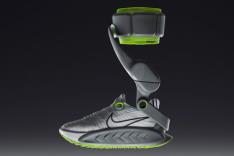
Capitalize on the beauty of the beach and the strength-enhancing workout running on sand provides. Beach running—especially on dry, loose sand—strengthens your arches, ankles and other below-the-knee muscles more than running on harder surfaces.
"Running on sand requires you to generate more force and work through a fuller range of motion, from your ankles to your hip flexors and arms," says Big Sur Distance Project elite coach Bob Sevene.
Several studies have found that running on sand consumes more energy than running on asphalt, burning as many as 1.6 more calories per mile. There's also much less impact force when you run on sand.
More: Sand: A Solid Foundation to Build Your Running Skills
When to Run on the Beach
A falling or low tide creates the most level, hard-packed surface for running. As the water recedes, it leaves hardening sand behind—similar to a soft trail that's forgiving on the body.
Check the local tide reports before your beach run. Ideally, you want to run at low tide or within an hour or two around the lowest point. Stay close to the edge of the water without getting your feet wet. Some beaches have extremely low tides and allow more room away from the edge of the water to run and still be on packed sand.
A high tide leaves soft, dry sand, which is kindest on the legs, but it's also much harder to power through (it makes 10-minute miles feel like speed work). Because of the added difficulty, your first beach runs should be done in running shoes in the hard, wet sand next to the water, preferably on a falling or low tide.
Shoes Versus Barefoot
Running barefoot on sand allows your feet to move through their natural range of motion, which helps to strengthen your feet and ankles. If you start running barefoot on the beach too fast or too frequently, you could get injured. Start with short runs, just 15 to 20 minutes, to build strength in your feet. Gradually add five minutes to your barefoot runs as your body adapts.
More: Barefoot Running Tips for Beginners
Be cautious that running barefoot on sand can lead to or worsen plantar fasciitis, ankle sprains or Achilles injuries because you don't have the support of shoes; therefore, the muscles get stretched longer than they would on a harder surface.
More: Plantar Fasciitis Prevention Tips
Beaches tend to have a lot of shells and other sharp objects you need to watch for—therefore, I recommend wearing shoes when running on the beach. There aren't specific shoes designed for running on sand, so you have many options. Using your regular road running shoes is perfectly fine. A lighter-weight trail shoe is also a good choice because of the added grip.
- 1
- of
- 2
About the Author

Get ACTIVE on the Go


Couch to 5K®
The best way to get new runners off the couch and across the finish line of their first 5K.
Available for iOS | Android







Discuss This Article